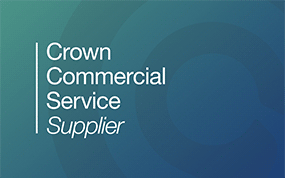Critical alerting modernised!
When there is talk of pagers and paging systems, many people know what they are, but few know about the full range of functionality they can offer. They may seem light on features, but this technology was sending messages a long time before mobile’s were invented and has distinct benefits over typical mobile communications devices. It’s one of the most simple and flexible forms of broadcast alerting.
For communications when it matters
Paging forms an essential part of the critical communications network for emergency services. For example all NHS Trusts in London use PageOne’s multi-network resilient solutions.
Paging supports critical messaging across the UK, and powers alerting across the emergency services. It is still very much part of the communications infrastructure for first responders.
In fact, 99% of UK acute hospitals use paging to summon staff for critical situations. Also, many of the UK fire services use paging to alert and mobilise fire fighters.
And it’s not just emergency services – any sector and situation where robust, accessible communications to team members are essential can benefit from paging. That might be power stations dealing with incidents, transport companies or businesses wanting reliable business continuity communication systems for team members.
Let’s look at why, when it comes to critical communications, paging is at the forefront, and look at those features that make paging unique and future proof.
Multi-network
Unlike paging system alternatives, paging doesn’t need to rely on one network. With the latest Responder 2-way pager there are multiple routes via which a message will be delivered, and the device will use whichever network is available at the time.
Dual Frequency
The Responder 2-way pager, and the s.Quad pager support the ability to operate on two different channels. They can automatically switch from on-site network frequency to the PageOne’s national paging network meaning seamless on and off-site communications on a single device.
Additionally, dual-frequency capability removes onsite ‘black spots’, giving resilience when it is needed.
Scalability
As PageOne’s paging networks broadcast immediately, messages are delivered to all devices simultaneously and within seconds. One message can be received by many thousands of recipients at the same time.
2-way critical alerting
2-way paging has had a big impact on paging and its applications and usage. 2-way paging devices offer real-time message delivery receipts, read receipts, pre-programmed replies, status updates and optional GPS location.
This really closes the gap on traditional one way send and hope paging functionality, allowing responses to be received and incident response to be managed efficiently.
The future
What’s the future for secure messaging, alerting and communications? Are Smartphone App’s, or similar the way forward? Well, the answer is for some non-critical applications yes. The flexibility, accessibility and ease of use are clear, if you are happy with the single point of failure this technology inherently has.
PageOne do offer Smartphone App’s, however we would not recommend them for critical alerting. For critical use, or sensitive environments, multi-network enabled 2-way paging is an essential for those incidents where you cannot afford to rely on just the internet, Wi-Fi or mobile data – when systems may be overloaded or unavailable.
Now, more than ever, modern paging is relevant, resilient, and reliable.
Multi-network enabled critical alerting from PageOne – are you ready?








